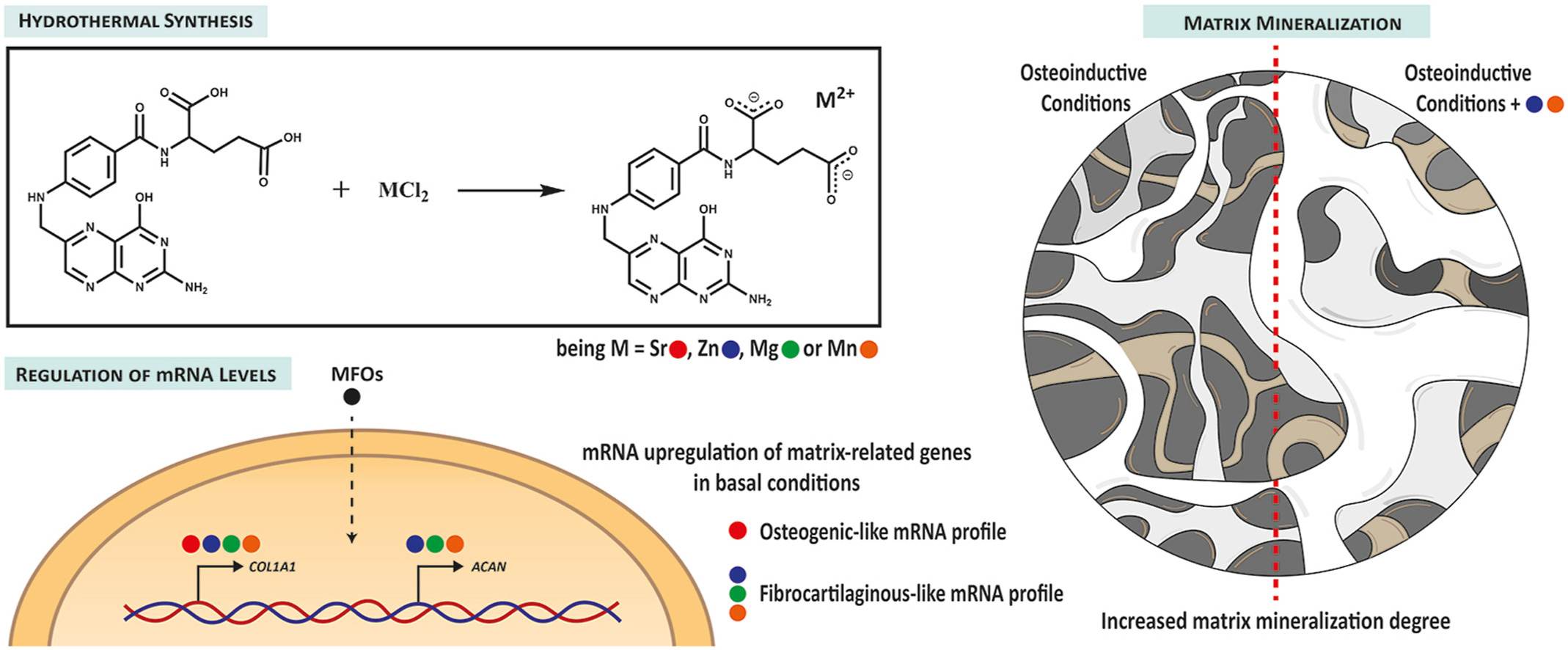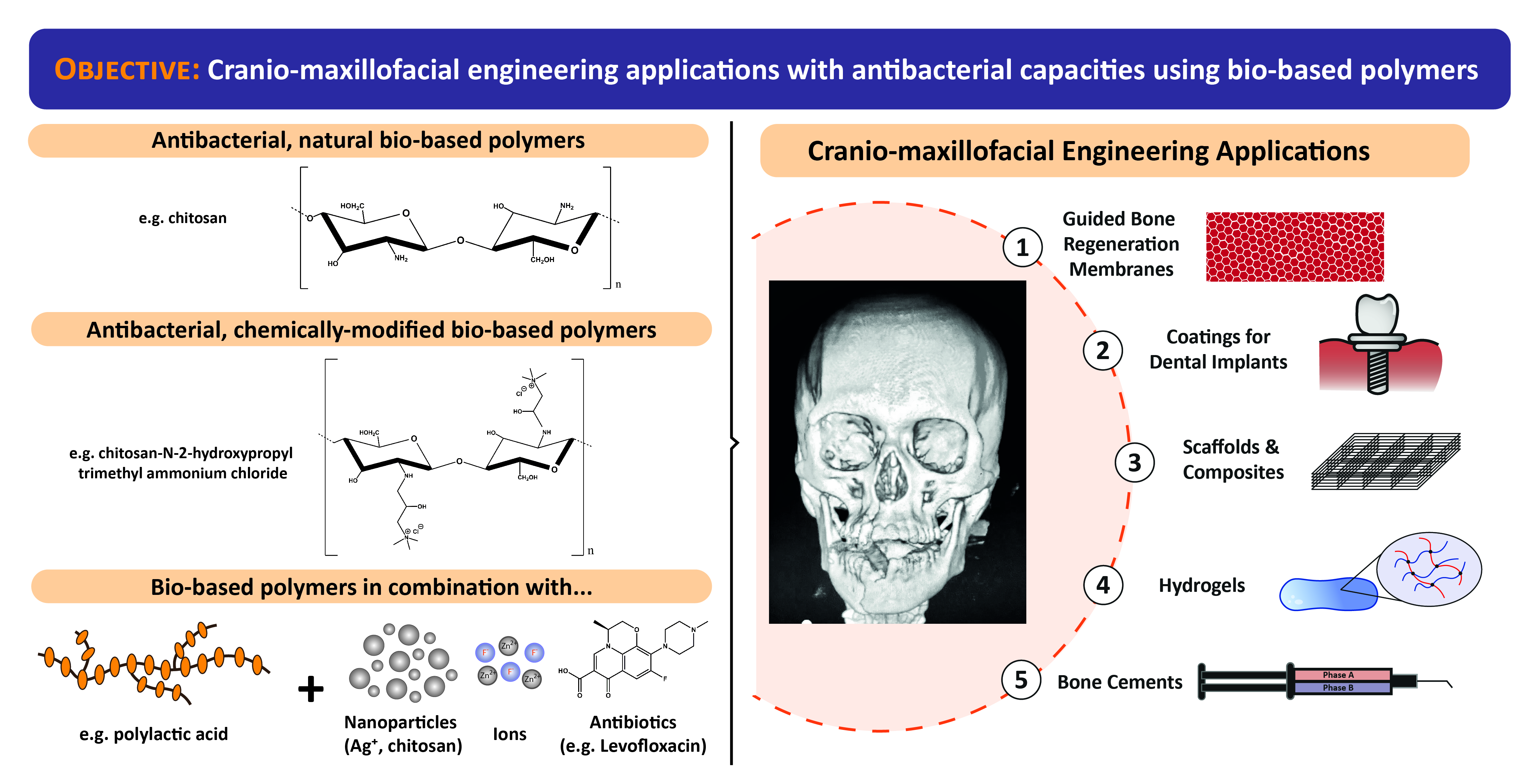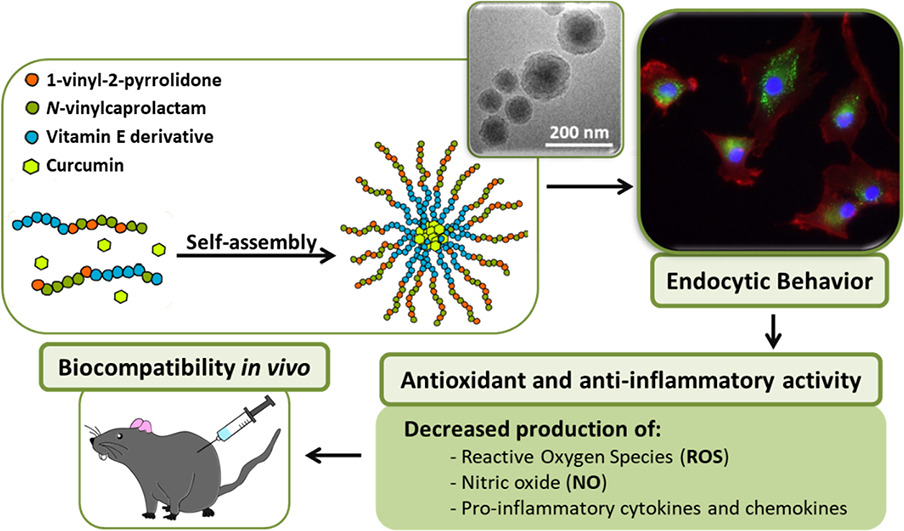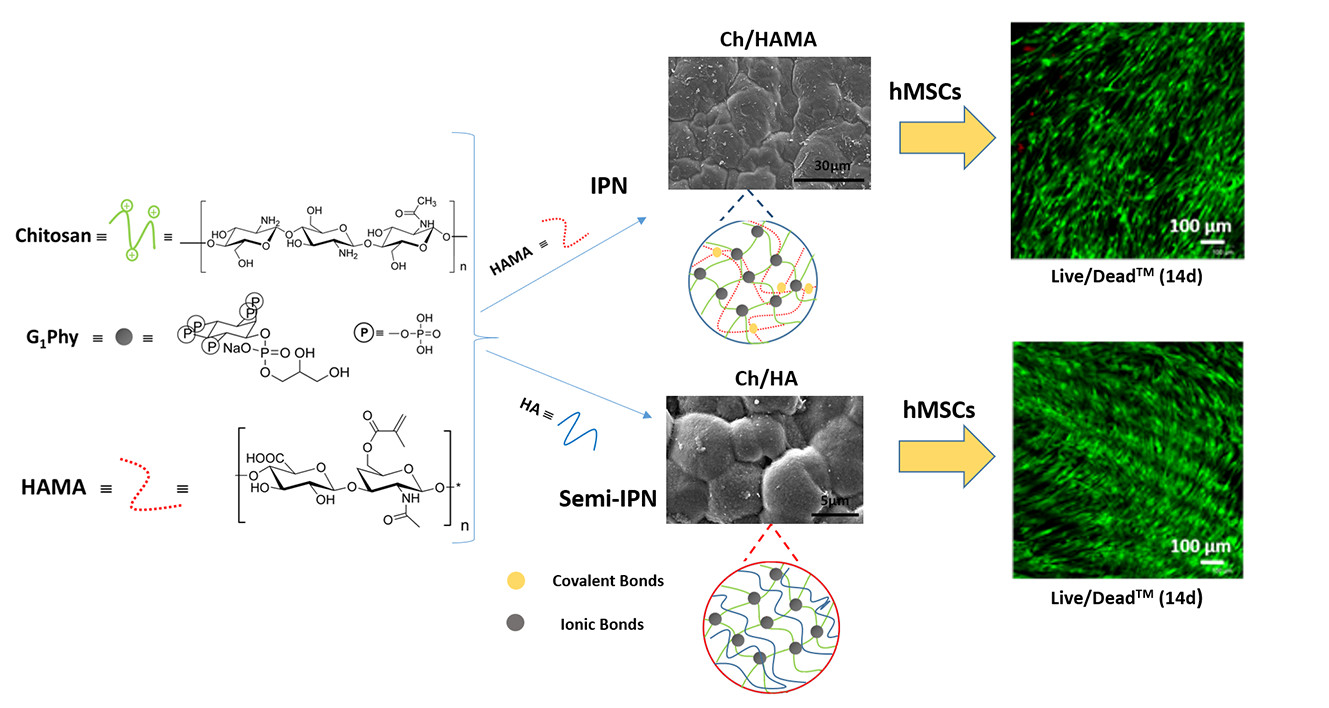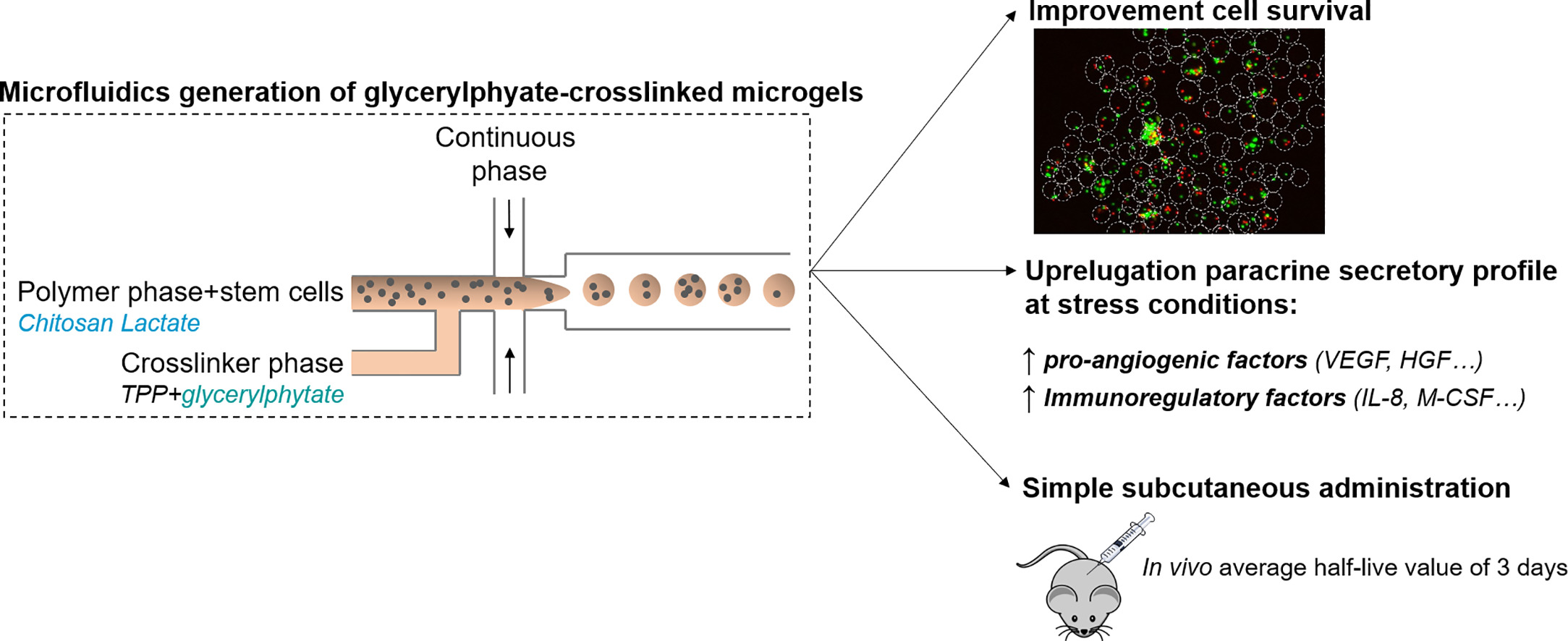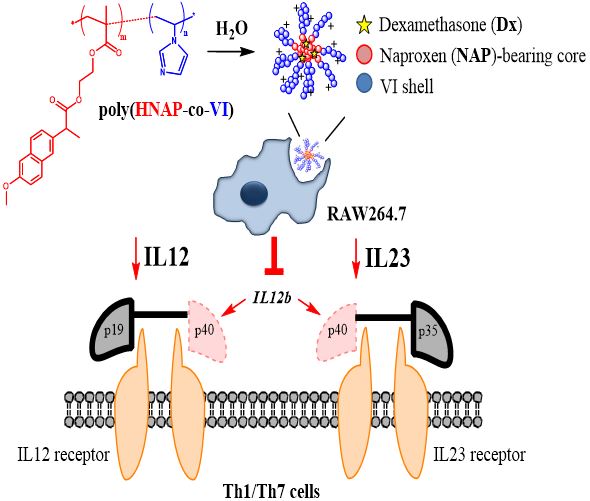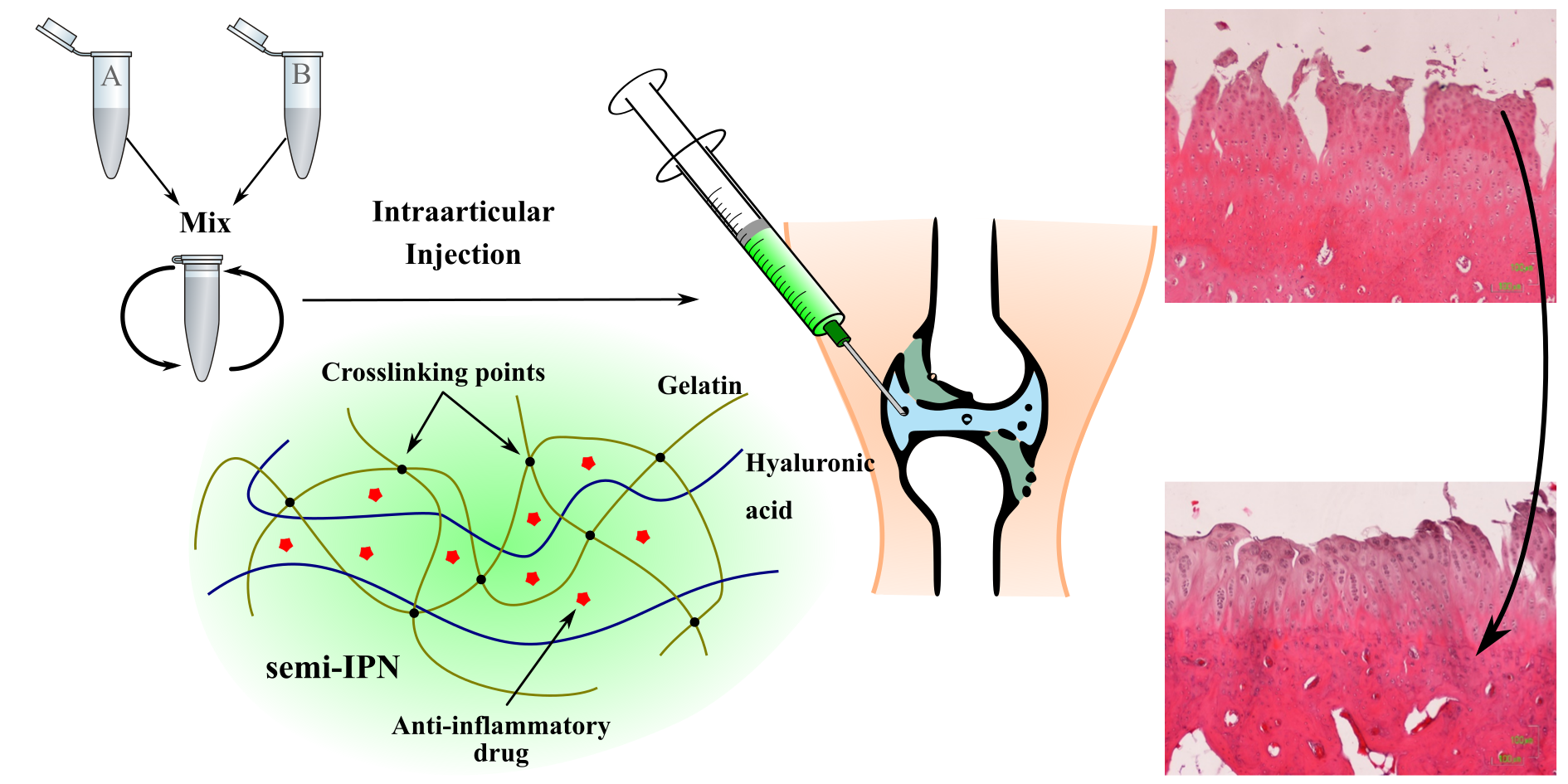The development of new drugs for musculoskeletal regeneration purposes has attracted much attention in the last decades. In this work, we present three novel vitamin B9 (folic acid)-derivatives bearing divalent cations (ZnFO, MgFO and MnFO), providing their synthesis mechanism and physicochemical characterization. In addition, a strong emphasis has been placed on evaluating their biological properties (along with our previously reported SrFO) using human mesenchymal stem cells (hMSC). In all the cases, pure folate derivatives (MFOs) with a bidentate coordination mode between the metal and the folate anion, and a 1:1 stoichiometry, were obtained in high yields. A non-cytotoxic dose of all the MFOs (50 μg/mL) was demonstrated to modulate by their own the mRNA profiles towards osteogenic-like or fibrocartilaginous-like phenotypes in basal conditions. Moreover, ZnFO increased the alkaline phosphatase activity in basal conditions, while both ZnFO and MnFO increased the matrix mineralization degree in osteoinductive conditions. Thus, we have demonstrated the bioactivity of these novel compounds and the suitability to further studied them in vivo for musculoskeletal regeneration applications.
Antibacterial Bio-Based Polymers for Cranio-Maxillofacial Regeneration Applications
Cranio-maxillofacial structure is a region of particular interest in the field of regenerative medicine due to both its anatomical complexity and the numerous abnormalities affecting this area. However, this anatomical complexity is what makes possible the coexistence of different microbial ecosystems in the oral cavity and the maxillofacial region, contributing to the increased risk of bacterial infections. In this regard, different materials have been used for their application in this field. These materials can be obtained from natural and renewable feedstocks, or by synthetic routes with desired mechanical properties, biocompatibility and antimicrobial activity. Hence, in this review, we have focused on bio-based polymers which, by their own nature, by chemical modifications of their structure, or by their combination with other elements, provide a useful antibacterial activity as well as the suitable conditions for cranio-maxillofacial tissue regeneration. This approach has not been reviewed previously, and we have specifically arranged the content of this article according to the resulting material and its corresponding application; we review guided bone regeneration membranes, bone cements and devices and scaffolds for both soft and hard maxillofacial tissue regeneration, including hybrid scaffolds, dental implants, hydrogels and composites.
Amphiphilic polymeric nanoparticles encapsulating curcumin: Antioxidant, anti-inflammatory and biocompatibility studies
Oxidative stress and inflammation are two related processes common to many diseases. Curcumin is a natural compound with both antioxidant and anti-inflammatory properties, among others, that is recently being used as a natural occurring product alternative to traditional drugs. However, it has a hydrophobic nature that compromises its solubility in physiological fluids and its circulation time and also presents cytotoxicity problems in its free form, limiting the range of concentrations to be used. In order to overcome these drawbacks and taking advantage of the benefits of nanotechnology, the aim of this work is the development of curcumin loaded polymeric nanoparticles that can provide a controlled release of the drug and enlarge their application in the treatment of inflammatory and oxidative stress related diseases. Specifically, the vehicle is a bioactive terpolymer based on a α-tocopheryl methacrylate, 1-vinyl-2-pyrrolidone and N-vinylcaprolactam. Nanoparticles were obtained by nanoprecipitation and characterized in terms of size, morphology, stability, encapsulation efficiency and drug release. In vitro cellular assays were performed in human articular chondrocyte and RAW 264.7 cultures to assess cytotoxicity, cellular uptake, antioxidant and anti-inflammatory properties. The radical scavenging activity of the systems was confirmed by the DPPH test and the quantification of cellular reactive oxygen species. The anti-inflammatory potential of these systems was demonstrated by the reduction of different pro-inflammatory factors such as IL-8, MCP and MIP in chondrocytes; and nitric oxide, IL-6, TNF-α and MCP-1, among others, in RAW 264.7. Finally, the in vivo biocompatibility was confirmed in a rat model by subcutaneously injecting the nanoparticle dispersions. The reduction of curcumin toxicity and the antioxidant, anti-inflammatory and biocompatibility properties open the door to deeper in vitro and in vivo research on these curcumin loaded polymeric nanoparticles to treat inflammation and oxidative stress based diseases.
Evaluation of glycerylphytate crosslinked semi-and interpenetrated polymer membranes of hyaluronic acid and chitosan for tissue engineering
In the present study, semi-and interpenetrated polymer network (IPN) systems based on hyaluronic acid (HA) and chitosan using ionic crosslinking of chitosan with a bioactive crosslinker, glycerylphytate (G1Phy), and UV irradiation of methacrylate were developed, characterized and evaluated as potential supports for tissue engineering. Semi-and IPN systems showed significant differences between them regarding composition, morphology, and mechanical properties after physicochemical characterization. Dual crosslinking process of IPN systems enhanced HA retention and mechanical properties, providing also flatter and denser surfaces in comparison to semi-IPN membranes. The biological performance was evaluated on primary human mesenchymal stem cells (hMSCs) and the systems revealed no cytotoxic effect. The excellent biocompatibility of the systems was demonstrated by large spreading areas of hMSCs on hydrogel membrane surfaces. Cell proliferation increased over time for all the systems, being significantly enhanced in the semi-IPN, which suggested that these polymeric membranes could be proposed as an effective promoter system of tissue repair. In this sense, the developed crosslinked biomimetic and biodegradable membranes can provide a stable and amenable environment for hMSCs support and growth with potential applications in the biomedical field.
Microfluidics generation of chitosan microgels containing glycerylphytate crosslinker for in situ human mesenchymal stem cells encapsulation
Human mesenchymal stem cells (hMSCs) are an attractive source for cell therapies because of their multiple beneficial properties, i.e. via immunomodulation and secretory factors. Microfluidics is particularly attractive for cell encapsulation since it provides a rapid and reproducible methodology for microgel generation of controlled size and simultaneous cell encapsulation. Here, we report the fabrication of hMSC-laden microcarriers based on in situ ionotropic gelation of water-soluble chitosan in a microfluidic device using a combination of an antioxidant glycerylphytate (G1Phy) compound and tripolyphosphate (TPP) as ionic crosslinkers (G1Phy:TPP-microgels). These microgels showed homogeneous size distributions providing an average diameter of 104 ± 12 μm, somewhat lower than that of control (127 ± 16 μm, TPP-microgels). The presence of G1Phy in microgels maintained cell viability over time and upregulated paracrine factor secretion under adverse conditions compared to control TPP-microgels. Encapsulated hMSCs in G1Phy:TPP-microgels were delivered to the subcutaneous space of immunocompromised mice via injection, and the delivery process was as simple as the injection of unencapsulated cells. Immediately post-injection, equivalent signal intensities were observed between luciferase-expressing microgel-encapsulated and unencapsulated hMSCs, demonstrating no adverse effects of the microcarrier on initial cell survival. Cell persistence, inferred by bioluminescence signal, decreased exponentially over time showing relatively higher half-life values for G1Phy:TPP-microgels compared to TPP-microgels and unencapsulated cells. In overall, results position the microfluidics generated G1Phy:TPP-microgels as a promising microcarrier for supporting hMSC survival and reparative activities.
Chitosan-stabilized silver nanoclusters with luminescent, photothermal and antibacterial properties
The aim of this paper is to achieve in situ photochemical synthesis of silver nanoclusters (AgNCs) stabilized by the multiple-amine groups of chitosan (Ch@AgNCs) with luminescent and photothermal properties. Ch@AgNCs were obtained by applying a fast and simple methodology previously described by our group. Direct functionalization of AgNCs with chitosan template provided new nanohybrids directly in water solution, both in the presence or absence of oxygen. The formation of hybrid AgNCs could be monitored by the rapid increase of the absorption and emission maximum band with light irradiation time. New Ch@AgNCs not only present photoluminescent properties but also photothermal properties when irradiated with near infrared light (NIR), transducing efficiently NIR into heat and increasing the temperature of the medium up to 23 °C. The chitosan polymeric shell associated to AgNCs works as a protective support stabilizing the metal cores, facilitating the storage of nanohybrids and preserving luminescent, photothermal and bactericide properties.
Polymeric Nanoparticles that Combine Dexamethasone and Naproxen for the Synergistic Inhibition of Il12b Transcription in Macrophages
Recent studies have demonstrated in vivo synergistic immunosuppressive and anti‐inflammatory capacity of dexamethasone (Dx) and naproxen (NAP) in collagen‐induced arthritis (CIA) rats. However, the molecular basis of this synergistic effect is barely understood. The low solubility of these drugs and their adverse effects hamper their efficacy on the treatment of inflammatory processes making nanoparticulated systems promising candidates to overcome these drawbacks. The aim of this work is the preparation of polymeric nanoparticles (NPs) that combine NAP and Dx in different concentrations, and the evaluation of the expression of key genes related to autoimmune diseases like CIA. To do so, self‐assembled polymeric NPs that incorporate covalently‐linked NAP and physically entrapped Dx are designed to have hydrodynamic properties that, according to bibliography, may improve retention and colocalization of both drugs at inflammation sites. The rapid uptake of NPs by macrophages is demonstrated using coumarine‐6‐loaded NPs. Dx is efficiently encapsulated and in vitro biological studies demonstrate that the Dx‐loaded NAP‐bearing NPs are noncytotoxic and reduce lipopolysaccharide‐induced NO released levels at any of the tested concentrations. Moreover, at the molecular level, a significant synergistic reduction of Il12b transcript gene expression when combining Dx and NAP is demonstrated.
Glycerylphytate crosslinker as a potential osteoinductor of chitosan-based systems for guided bone regeneration
Chitosan-based membranes are promising systems for guided bone regeneration. In this work, we used glycerylphytate as ionic crosslinker and osteinductor compound for the fabrication of chitosan membranes as supports for human mesenchymal stem cells. Three different glycerylphytate-crosslinked membranes were developed by changing the crosslinker concentration, from 2.5–10 wt-%, respect to chitosan. Physico-chemical characterization in terms of composition, morphology, and thermal behavior was further analyzed. Swelling degree, crosslinking density, and crosslinker release showed a glycerylphytate content-dependent behavior. Glycerylphytate suggested to improve osteointegration ability of chitosan surfaces by the formation of apatite-like aggregates after incubation in body simulated fluid. Stem cells cultured on the membranes increased their viability over time, and the incorporation of glycerylphytate improved osteogenic and osteoinductivity potential of chitosan by increasing calcium deposition and alkaline phosphatase (ALP) activity on cultured stem cells. These results demonstrated a potential application of glycerylphytate-crosslinked chitosan systems for promising bone tissue regeneration.
1.Mora-Boza, A. et al. Glycerylphytate crosslinker as a potential osteoinductor of chitosan-based systems for guided bone regeneration. Carbohydrate Polymers 241, 116269 (2020). Cite
Injectable hydrogel-based drug delivery system for cartilage regeneration
Osteoarthrosis is a chronic degenerative disease of slow progression that constitutes a severe clinical and public health problem. The current clinical treatments available are incapable to reverse disease progression so that nowadays there is a demand of developing alternative systems to avoid or delay the application of surgical procedures. In this work, injectable hydrogel drug delivery systems loaded with naproxen or dexamethasone are formulated based on a ready to use simple two components system. Hydrogels consist of gelatin and hyaluronic acid forming a semi-interpenetrating network structure (semi-IPN). This study mainly focuses on the physicochemical characterization of hydrogels, the in vitro analysis and in vivo performance after injection in New Zealand rabbit knees with an OA model. Results indicate that there is a close relationship between the drug release and the hydrogel degradation. All hydrogels are cytocompatible and support good cell viability of human chondrocytes and osteoblast. The in vivo results reveal that both hydrogels promote cartilage regeneration after their injection in osteoarthrosis knees. The extracellular matrix reflects presence of proteoglycans for the naproxen loaded hydrogel group, and collagen type II expression in both loaded groups, more evident for that containing dexamethasone.
1.García-Fernández, L. et al. Injectable hydrogel-based drug delivery system for cartilage regeneration. Materials Science and Engineering: C 110, 110702 (2020). Cite
A Comparative Study on HCN Polymers Synthesized by Polymerization of NH4CN or Diaminomaleonitrile in Aqueous Media: New Perspectives for Prebiotic Chemistry and Materials Science
HCN polymers are a group of complex and heterogeneous substances that are widely known in the fields of astrobiology and prebiotic chemistry. In addition, they have recently received considerable attention as potential functional material coatings. However, the real nature and pathways of formation of HCN polymers remain open questions. It is well established that the tuning of macromolecular structures determines the properties and practical applications of a polymeric material. Herein, different synthetic conditions were explored for the production of HCN polymers from NH4CN or diaminomaleonitrile in aqueous media with different concentrations of the starting reactants and several reaction times. By using a systematic methodology, both series of polymers were shown to exhibit similar, but not identical, spectroscopic and thermal fingerprints, which resulted in a clear differentiation of their morphological and electrochemical properties. New macrostructures are proposed for HCN polymers, and promising insights are discussed for prebiotic chemistry and materials science on the basis of the experimental results.

